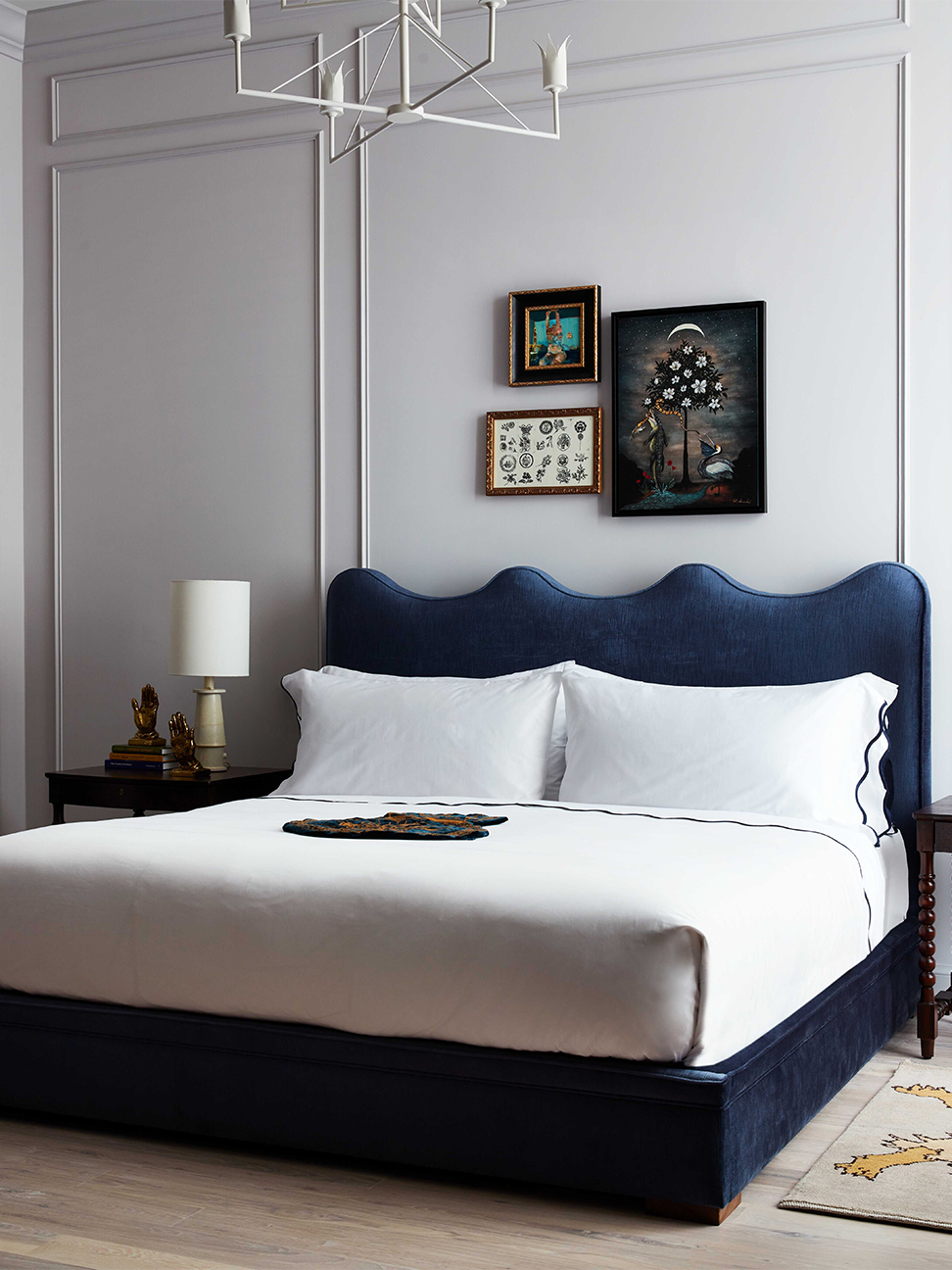We may earn revenue from the products available on this page and participate in affiliate programs.
There are few pleasures quite as satisfying as slipping into the crisp white sheets of a perfectly made-up hotel bed. Part of the allure is certainly that it’s a bed that you didn’t have to tidy yourself, but you also have to admit: Hotels have a knack for helping you get your best night’s sleep.
Why? “A hotel bed is great when the mattress and linens are so comfortable you wake up forgetting where you are,” says designer and hotelier Robert McKinley. Simply put, they’re transportative—and you can re-create that same dreamy experience in your own bedroom. All it takes are a few key, high-quality pieces—we asked hospitality experts for their go-tos.
The Mattress
Quality and durability are key facets of a good hotel mattress—and the same should apply to the one in your home. You want your bed to last a long time, after all. As for what kind of mattress—foam versus coils—the experts are split.
In Hyatt hotels, you’ll find custom mattresses with pocketed coils. “We’ve found this to be preferred by most guests,” explains Sarah Klymson, vice president of product and brand development.
At the Ace Hotel properties, however, you’re more likely to find Suite Sleep mattresses, which are made of all-natural latex foam with organic cotton ticking and wool quilting. “Their extended life span keeps them out of landfills, and their materials can be shredded and recycled for new use. We like that they have a light footprint, but they’re also incredibly comfortable,” says Kelly Sawdon, chief brand officer–partner at Atelier Ace/Ace Hotel Group. “I use one at home—many of our team members do.” The Hoxton Hotel opts for a similarly eco-friendly mattress: U.K. brand Natural Mat, says associate director of design Megan Gibbon.
The Sheets
“To re-create the feel of a hotel bed experience, look for linens that are made well, hold up over time, and, aesthetically, complement the design of your space,” says Klymson. She recommends Brooklinen’s classic percale sheets.
Cotton is a classic choice—the Hoxton (and lots of other hotels, including Proper) favors sheets from Bellino Fine Linens; Ace Hotel opts for its own line of organic bedding, made with sustainable, 100 percent BCI-certified cotton; and the Four Seasons uses its own in-house crisp sateen sheets, made with Supima cotton.
McKinley, however, prefers linens from Wright Bedding. “The more you wash them, the softer they become,” he says. “The company is led by an incredible team that is passionate about American-made manufacturing and has spent time caring about working with small mills—allowing customers to be part of building communities, not corporations.” That pretty much guarantees good dreams in our book.
The Pillows
Pillows are arguably one of the most personal components—which is why most hotels offer a couple options in terms of fill and firmness. Overall, a combination of down and feather seems to please most. Hyatt’s most popular is a 30 percent down, 70 percent feather fill. The Four Seasons opts for 25 percent down, 75 percent feather; according to Dana Kalczak, vice president of design, the blend “promises a luxurious feel with just the right amount of support.”
The Hoxton uses pillows from Down Etc., with 60 percent down and 40 percent feathers, which Gibbon says also strikes a good balance: “Not too firm, not too soft—so they’re comfortable for all.”
Of course, if you’d rather skip the down, you can still get five-star sleep. Four Seasons also offers a down alternative pillow that’s not just supportive and cushy, it’s also antibacterial and antimicrobial.
The Extras
What makes a hotel bed a hotel bed? For many, says Klymson, it’s the signature all-white color scheme—but that doesn’t mean it has to look stark.
Some accessorizing will make things cozier. “We love a natural-fiber, easy-to-wash quilt placed at the end of the bed,” McKinley says. “This gives guests something to curl up under when they return to their room without having to unmake anything.” At Ace Hotel and the Hoxton, guests are also likely to find quilts or duvet covers designed in collaboration with local designers or brands. (Ace’s Portland, Oregon, location features designs by Pendleton, and the Hoxton’s Williamsburg, Brooklyn, spot includes comforters by Ellen Van Dusen.)
The Presentation
Now the most important thing: Making your bed nicely, no matter what kind of bedding or pillows you have. It doesn’t have to be hard. “Pull the sheets tight and get good at hospital corners,” McKinley says.
Klymson suggests pivoting the mattress to give you full access to each corner as you need it. But don’t fold things too snug. “Our best tip is our signature ‘Issy Fold,’ named after Four Seasons founder Isadore Sharp,” Kalczak says. “When it comes time to layer on the flat sheet, tuck it with an eight-inch pocket along the bottom so that you can easily move your feet.” Finally, a hotel-quality bed you don’t have to leave behind at checkout.
See more stories like this: The Bedding Brand Beloved by Five-Star Hotels Is Launching Affordable Sheets 6 Things to Remove From Your Bedroom for Better Sleep 6 Paint Colors You’ll Never Find in an Interior Designer’s Home
